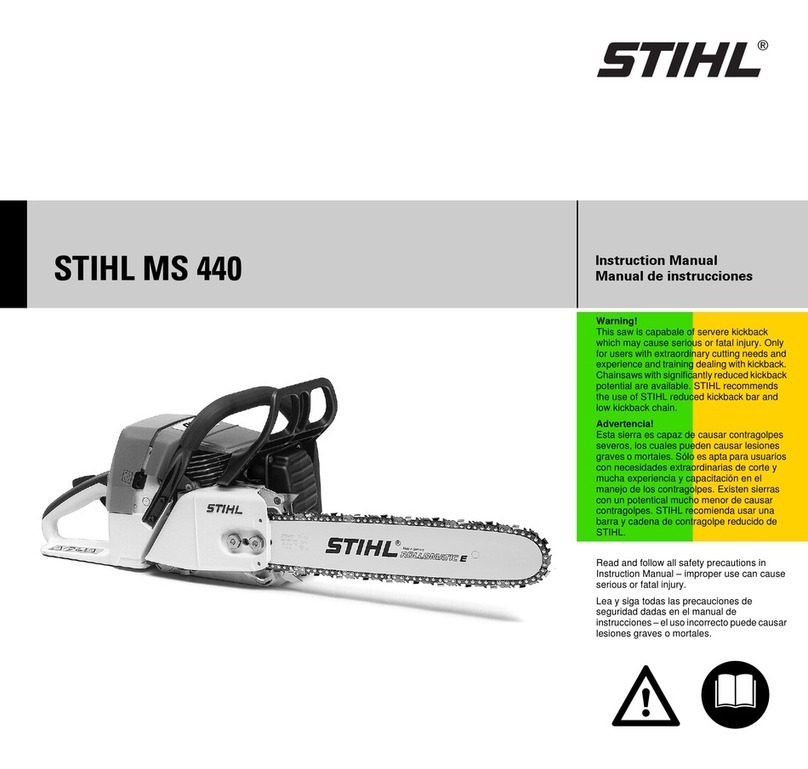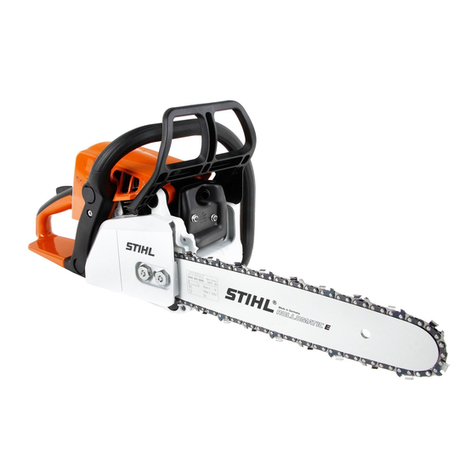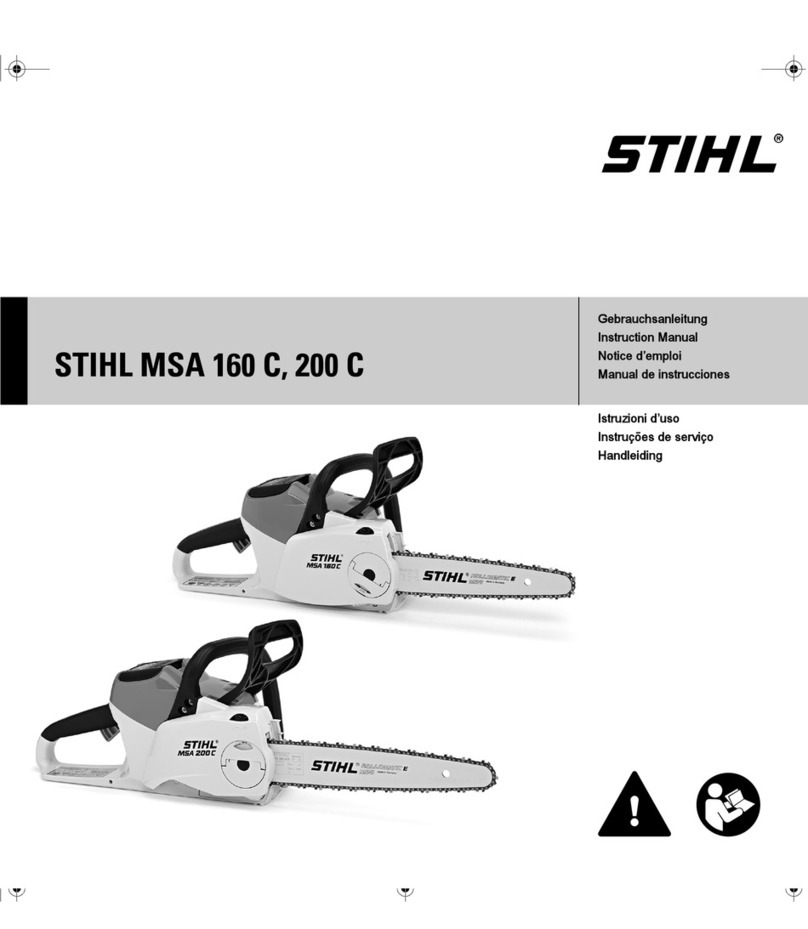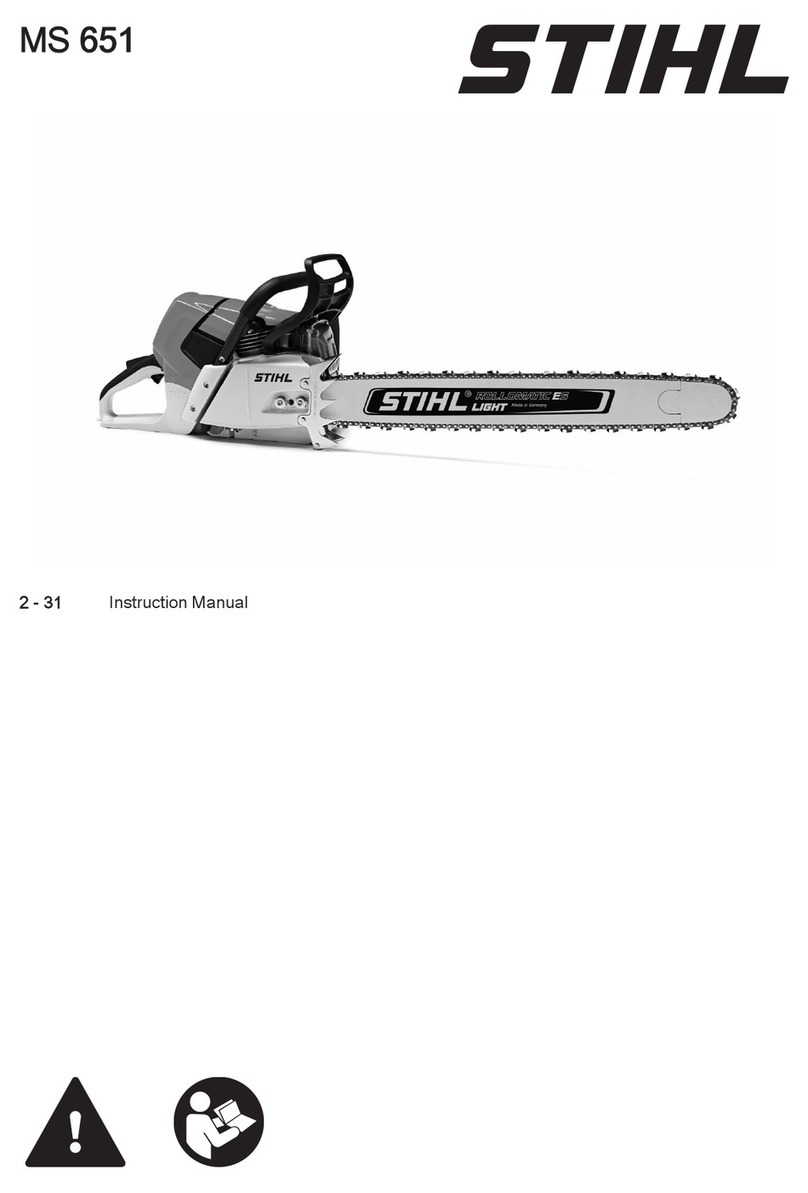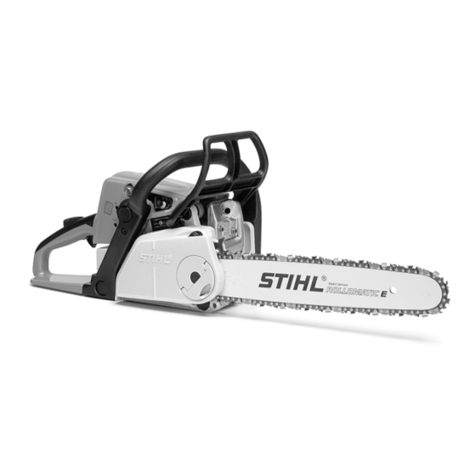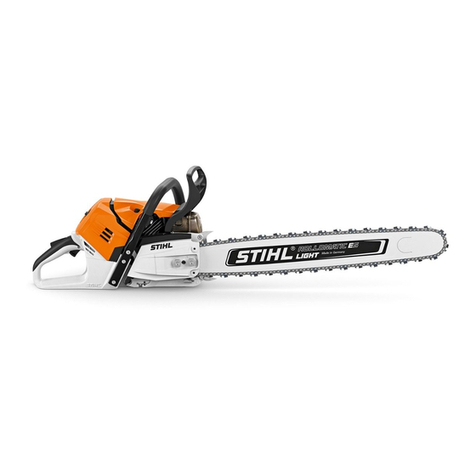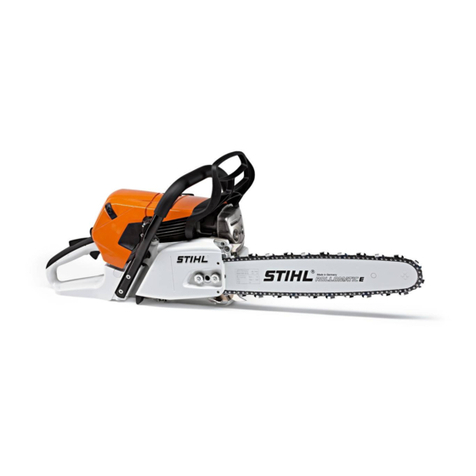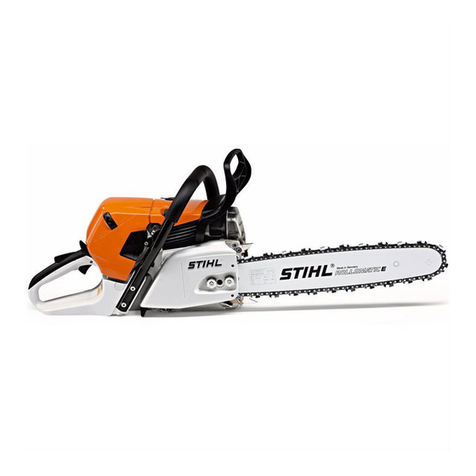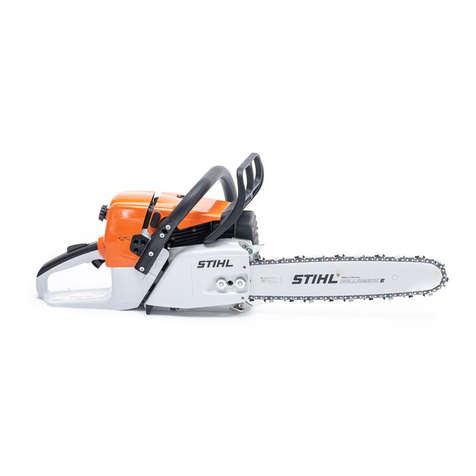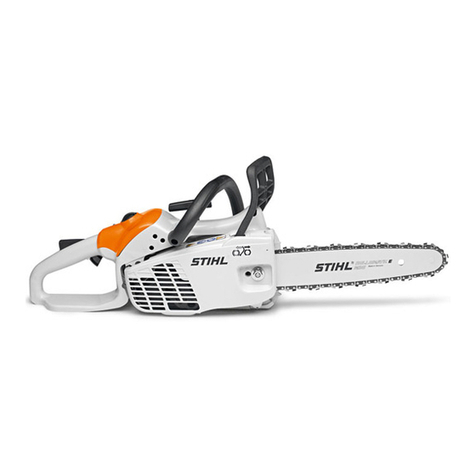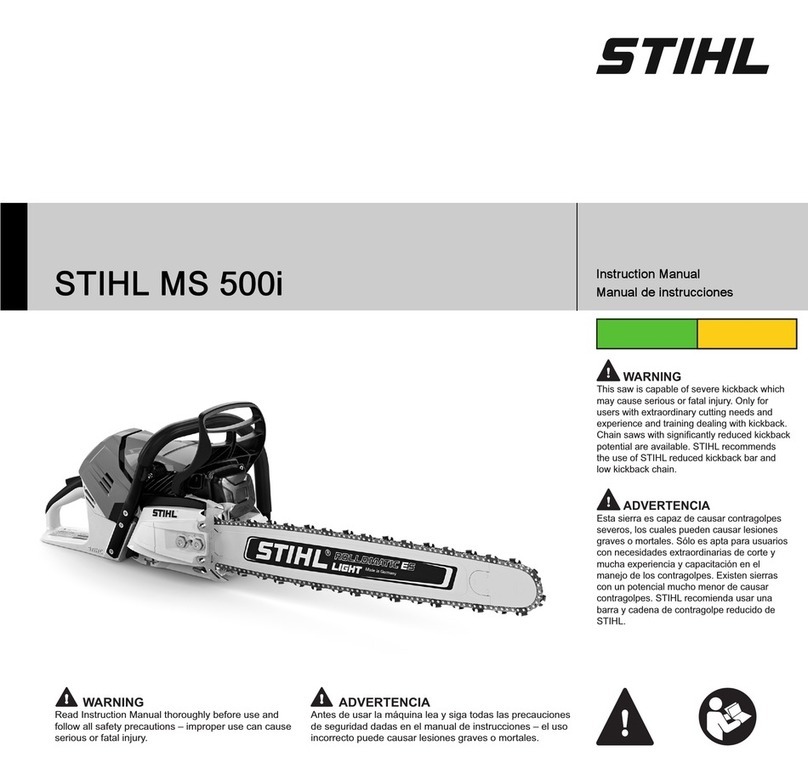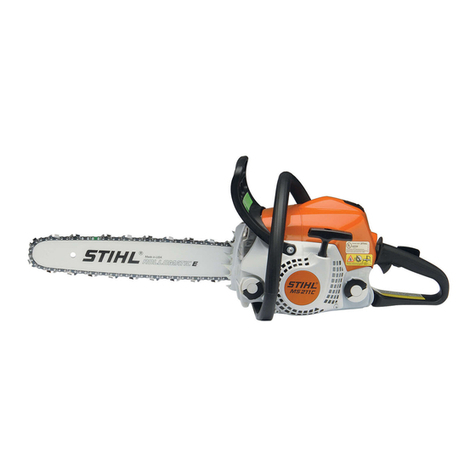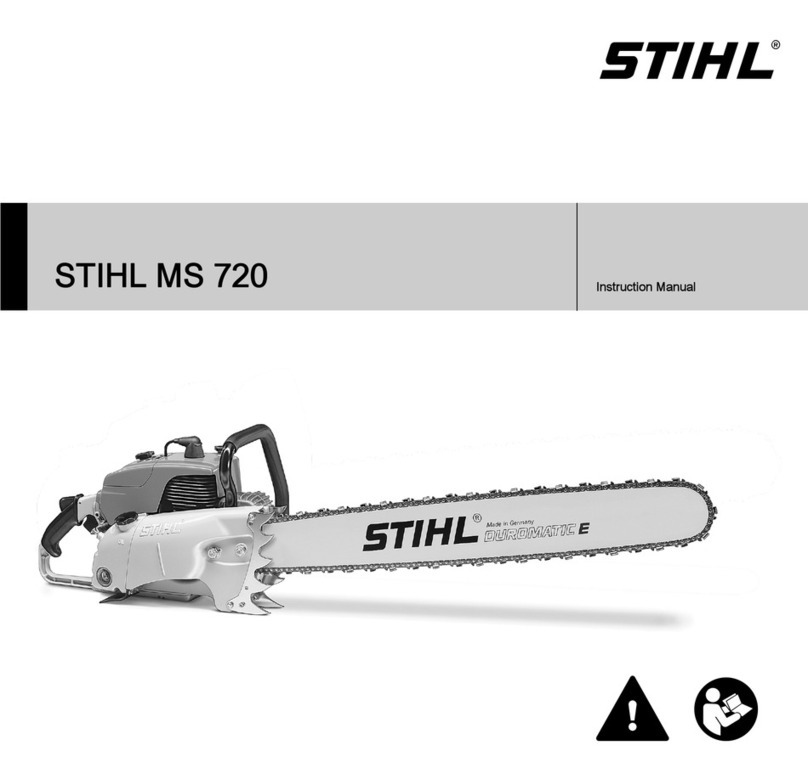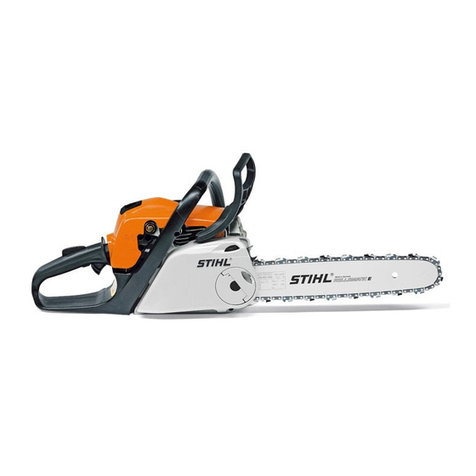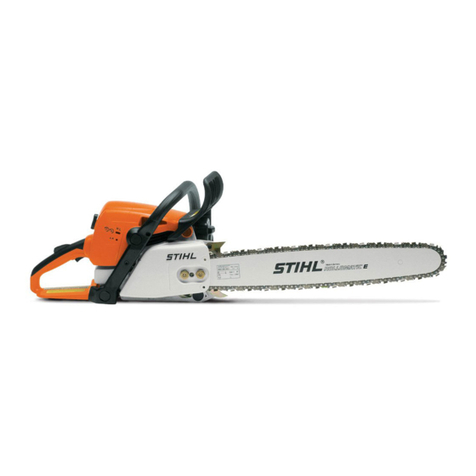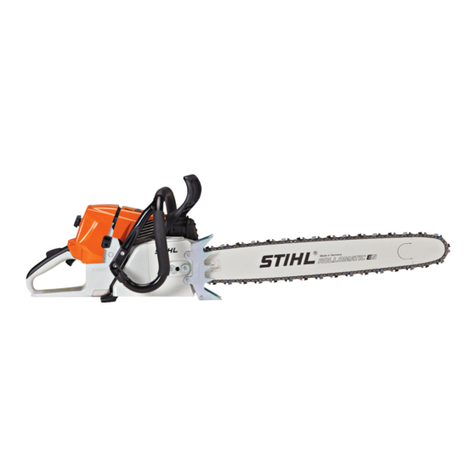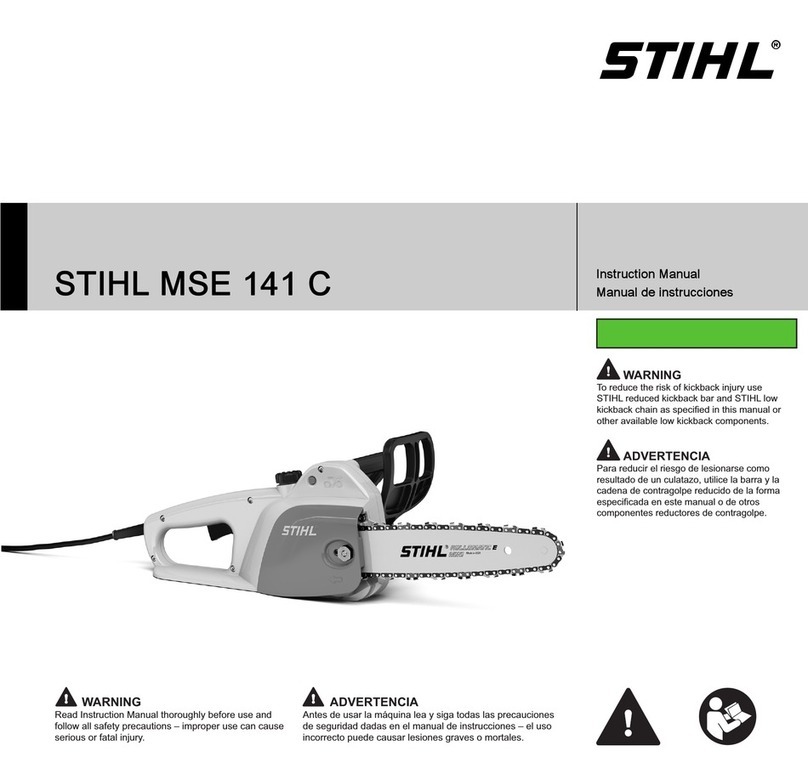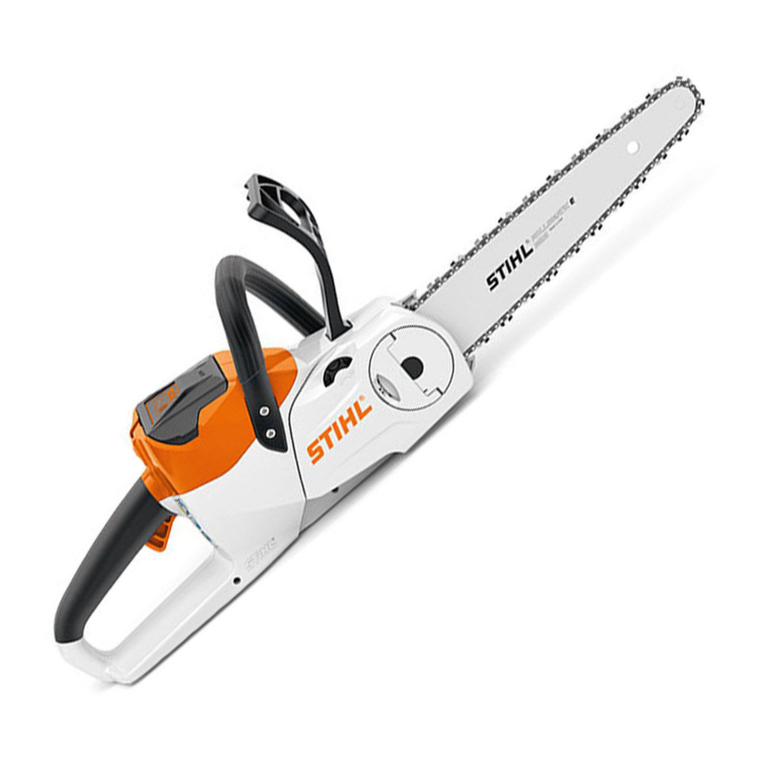This service manual contains
detailed descriptions of all servi-
cing procedures for STIHL model
E140,E160andE180Celectric
chainsaws and can thus be used
as a basis for professional over-
hauls and repairs on all versions
of these machines.
As the constructional features of
these electric saws are almost
identical, the servicing procedures
generally apply to all three
models. Differences are described
in detail and special reference is
made to the model concerned in
each case.
Caution: When carrying out re-
pairs to electric saws it is essential
to observe all relevant national sa-
fety regulations and ordinances.
We recommend that you make
use of the exploded views in the
illustrated parts lists while carrying
out repair work. Most of the illustra-
tions show the installed positions
of the individual components and
assemblies.
Refer to the latest edition of the
parts list for the part numbers of
any spare parts you may require.
Microfilmed parts lists are always
more up to date than printed lists.
Afaultonthepowertoolmayhave
several causes. Consult the
troubleshooting charts for all
assemblies in the "Standard
Repairs, Troubleshooting" hand-
book and the troubleshooting
charts immediately after the speci-
fications in this manual.
Refer to the "Technical Informa-
tion" bulletins for engineering chan-
ges which have been introduced
since publication of this service
manual. Technical information
bulletins also supplement the parts
list until a revised edition is
issued.
The special servicing tools men-
tioned in the descriptions are
listed in the last chapter of this ma-
nual.
Use the part numbers to identify
the tools in the "STIHL Special
Tools" manual.
The manual lists all special ser-
vicing tools currently available
from STIHL.
Symbols are included in the text
and pictures for greater clarity.
The meanings are as follows:
In the descriptions:
•=Actiontobetakenas
shown in the illustration
(above the text)
-= Actiontobetakenthat
is not shown in the
illustration
(above the text)
In the illustrations:
=Pointer
=Directionofmovement
Servicing instructions and all
technical information bulletins de-
scribing engineering changes are
intended exclusively for the use of
STIHL servicing dealers. They
must not be passed to third parties.
Servicing and repairs are made
considerably easier if the electric
saw is mounted to the assembly
stand (1) 5910 890 3100.
This enables the saw to be swivel-
led to the best position for the on-
going repair and leaves both
hands free.
It is secured with the sprocket co-
ver nut (after removing sprocket
cover). On the E 180 C, remove
the quick chain tensioner and the
secure saw to stand with an M8
nut.
Always use original STIHL
replacement parts.
They can be identified by the
STIHL part number,
the logo
and the STIHL parts symbol
The symbol may appear alone on
small parts.
1. INTRODUCTION
100RA001
1
VA
2E140,E160,E180
